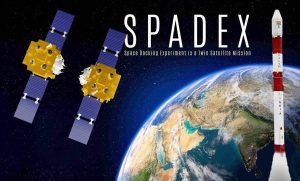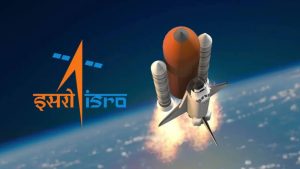New Delhi – The Indian Space Research Organisation (ISRO) has marked a significant achievement in its Space Docking Experiment (SpaDeX) mission by successfully conducting a SpaDeX Rolling Experiment. The SpaDeX Rolling Experiment represents a critical advancement in enhancing satellite docking capabilities, which are vital for future space missions, including satellite servicing, space station operations, and interplanetary explorations.
Introduction to the SpaDeX Mission

SpaDeX, an acronym for Space Docking Experiment, is a technology demonstrator mission developed by ISRO to showcase in-space docking between small satellites. The mission involves two satellites, each weighing approximately 220 kilograms, designed to perform autonomous rendezvous and docking maneuvers in low Earth orbit. The primary objectives of SpaDeX include:
-
Demonstrating autonomous rendezvous and docking using the V-bar approach.
-
Verifying electrical power transfer between two docked spacecraft.
-
Executing composite spacecraft control using the Attitude Control System of another spacecraft while in a docked configuration.
-
Operating as independent satellites after undocking, with payload operations planned for a duration of two years.
Launch and Initial Operations


The SpaDeX mission commenced with the successful launch of the two satellites aboard ISRO’s Polar Satellite Launch Vehicle (PSLV-C60) on December 30, 2024. The launch injected the satellites into a 475-kilometer circular orbit with a 55° inclination. Post-launch, the satellites, designated as Chaser (SDX01) and Target (SDX02), were separated by approximately 20 kilometers to initiate the rendezvous phase.
Successful Docking and Undocking Maneuvers
Following a series of meticulously planned maneuvers, ISRO achieved a historic milestone by successfully docking the Chaser and Target satellites on January 16, 2025. This achievement of SpaDeX Rolling Experiment positioned India as the fourth nation globally, after the USA, Russia, and China, to develop and demonstrate in-space docking capabilities. The docking process involved:
-
Reducing the inter-satellite distance from 15 meters to 3 meters.
-
Initiating docking with precision, leading to successful spacecraft capture.
-
Completing retraction smoothly, followed by rigidization for stability.
The ISRO Telemetry, Tracking and Command Network’s Mission Operations Complex verified the success of the docking process. Subsequently, on March 13, 2025, ISRO completed the undocking of the two satellites, marking another key step toward mastering autonomous docking technology.
The SpaDeX Rolling Experiment: A New Milestone
Building upon the success of previous maneuvers, ISRO conducted a SpaDeX Rolling Experiment involving the circumnavigation of one satellite around the other to verify control over satellite maneuvering. The SpaDeX Rolling Experiment is crucial for future missions, such as Chandrayaan-4, as it provides valuable data and helps validate multiple software and ground station control systems.
The SpaDeX Rolling Experiment involved:
-
Initiating a controlled roll of the Chaser satellite around the Target satellite.
-
Monitoring and analyzing the relative motion and control dynamics during the maneuver.
-
Collecting data to refine algorithms and control strategies for future docking operations.
Significance of the SpaDeX Rolling Experiment
The successful execution of the SpaDeX Rolling Experiment holds profound implications for ISRO’s future endeavors. It enhances the organization’s understanding of complex docking maneuvers, which are essential for:
-
Satellite Servicing: Enabling maintenance and refueling of existing satellites, thereby extending their operational lifespan.
-
Space Station Operations: Facilitating the assembly and operation of modular space stations, such as the proposed Bharatiya Antariksh Station (BAS).
-
Interplanetary Missions: Supporting complex mission profiles that require docking and undocking of spacecraft in deep space explorations.
Technical Challenges and Overcoming Them
Achieving successful docking and rolling maneuvers in space presents several technical challenges, including:
-
Precise Navigation and Control: Ensuring accurate positioning and orientation of satellites during rendezvous and docking.
-
Autonomous Operations: Developing reliable autonomous systems capable of performing complex maneuvers without real-time ground intervention.
-
Safety Protocols: Implementing fail-safe mechanisms to prevent collisions and ensure the safety of the spacecraft.
ISRO addressed these challenges through rigorous ground simulations, advanced control algorithms, and incremental testing approaches. The success of the rolling experiment demonstrates the organization’s capability to overcome these challenges effectively.
Future Plans and Experiments


ISRO plans to conduct additional experiments and docking maneuvers in the coming months to further enhance the accuracy and reliability of automated docking procedures. These plans include:
-
Multiple Docking Attempts: Performing several docking maneuvers with varying inter-satellite distances, up to a maximum of 100 meters, to optimize fuel usage and refine docking techniques.
-
Power Transfer Experiments: Establishing and verifying electrical power transfer between docked modules to support future mission requirements.
-
Orientation Maneuvers: Conducting a series of maneuvers at different orientations to fully comprehend flight dynamics and validate control strategies.
Also Read: Delhi Education Budget 2025: A Bold Rs. 19,291 Crore Investment for Schools
Implications for India’s Space Program
The advancements achieved through the SpaDeX mission and SpaDeX Rolling Experiment have significant implications for India’s space program:
-
Enhanced Capabilities: Strengthening ISRO’s ability to undertake complex missions involving docking, which is pivotal for future human spaceflight missions under the Gaganyaan program.
-
International Collaboration: Positioning India as a capable partner for international collaborations involving docking technologies and joint missions.
-
Commercial Opportunities: Opening avenues for commercial satellite servicing and in-orbit assembly operations, contributing to the growth of India’s space economy.
Closing Remarks on the SpaDeX Rolling Experiment
ISRO’s successful completion of the SpaDeX Rolling Experiment marks a monumental step forward in India’s pursuit of advanced space technologies. By demonstrating proficiency in complex docking maneuvers, ISRO not only reinforces its position among the leading space-faring nations but also lays a robust foundation for future missions that will expand humanity’s presence and capabilities in space.

